Recently, some netizens questioned that Dior’s mid-length skirt with a price of 29,000 yuan, with overlapping front and back pieces, is similar to the version of a traditional Chinese horse-faced skirt, but its official introduction said, “It adopts the iconic Dior silhouette. ”
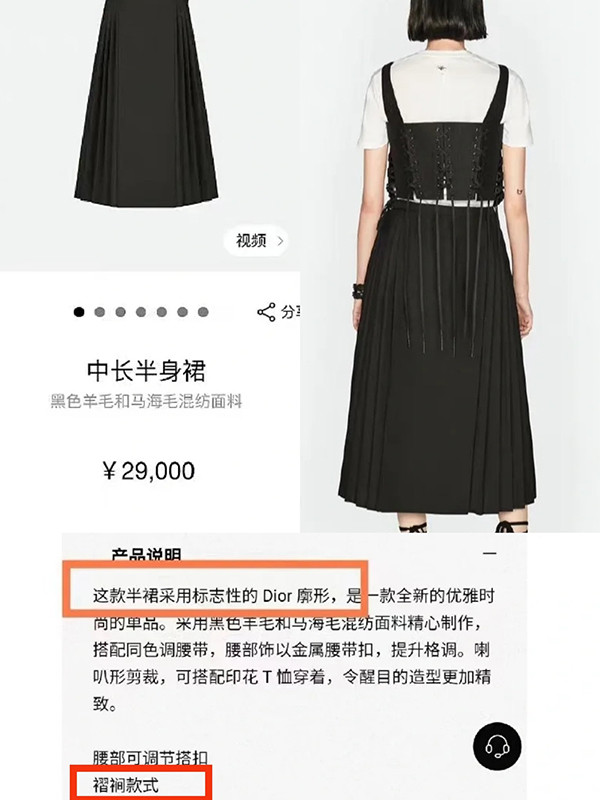
This immediately sparked discussions among netizens. Some Hanfu fans believed that this was a “proper cultural appropriation”, while others recognized Dior’s reference. “The horse-faced skirt does not have intellectual property rights, nor is it an intangible cultural heritage.”
The horse-faced skirt is a typical skirt style popular for Han women in the Ming and Qing Dynasties, and it is often matched with the big cardigan worn on the top. It has a fixed structure as a whole – two-piece type, four skirt doors, four skirt doors are overlapped two by two, the sides are pleated, and the smooth surface formed by the overlapping of the middle skirt doors is the “horse surface”. And the controversial Dior dress, you can see the obvious two-piece, pleated design.
At present, Dior has not responded to public opinion. The Chinese official website has removed the dress, but the foreign official website is still selling it at a price of 2,700 pounds.
One of the most famous Hanfu skirt styles
In early 1981, the young Diana was announced as the royal bride and entered the palace with the newly engaged Prince Charles to meet members of the royal family. That night, she was wearing a white silk blouse with lace trim, and a red silk embroidered horse-face skirt on her lower body. The contrasting colors of red and white, mixing Chinese and Western styles, were novel and festive.
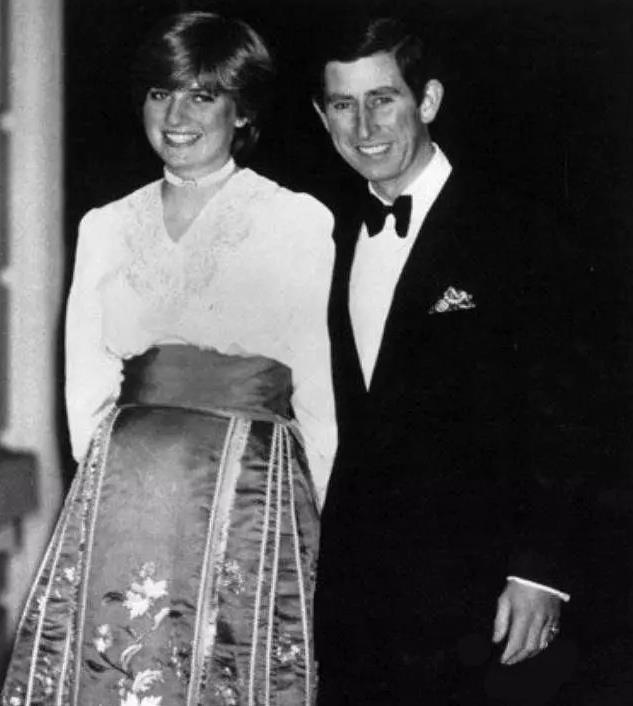
This is the highlight of the horse-faced skirt on the modern international stage. In recent years, driven by the popularity of Hanfu, it has also become one of the most familiar skirt styles in Hanfu.
The first Hanfu general book “General Theory of Hanfu” published in October last year wrote that the horse-faced skirt was once the most basic style of women’s skirts in the Ming Dynasty. The way of wearing is changed from “one-piece” to two overlapping pieces at the front and the back, which makes it easier for the wearer to move around. The “glossy” front and back of the skirt is suitable for displaying exquisite craftsmanship.
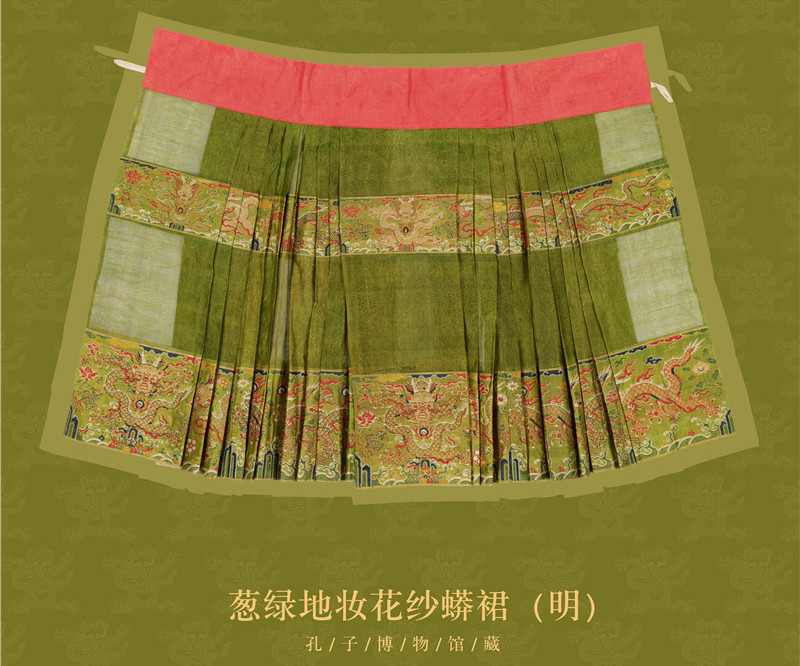
Many cultural and museum institutions have unique horse-faced skirts in the Ming and Qing Dynasties, such as the white dark-flowered yarn embroidered bird-pattern skirt from the Shandong Museum, the blue tangle of four seasons flowers and gold makeup damask skirts, and the lush green makeup flower yarn python skirt.
Due to the existence of many Hanfu in the Ming Dynasty, merchants restored many elegant and luxurious skirts. Hanke Silk Road’s Ming-made Hanfu imitation Confucius’s makeup, woven, gold, lace, blue satin skirt and horse-faced skirt, the prototype is from the old collection of Confucius, and the price is close to 3,000 yuan. Another Ming Huatang, which is famous for its Ming system, has also launched a dozen or so styles, such as the lion play ball, the crane, the chili and the hibiscus, and the secretly woven gold gauze skirt. The price is 2,000 to 3,000 yuan. The current construction period has been scheduled until after October.
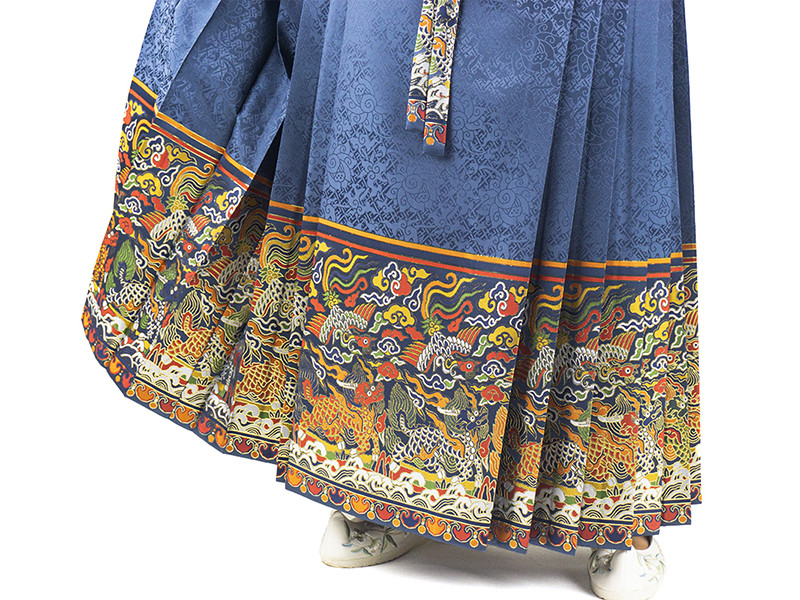
These historically inherited Hanfu sometimes amazes the stage of national style variety shows, giving people a sense of solemnity. of ordinary people. Since 2019, on Weibo, Douyin, Station B and other platforms, the popularity of Hanfu has been advancing all the way, and many Hanfu culture festivals have appeared in various places. Hanfu has also grown from a niche hobby to a tens of billions market.
Data from iiMedia Research shows that from 2015 to 2020, the sales scale of China’s Hanfu market has increased significantly from 190 million yuan to 6.36 billion yuan.
International interpretation of Chinese style
As early as 1997, the genius designer John Galliano used a lot of Chinese elements in his first spring and summer haute couture show when he took office at Dior. These eye-catching oriental beauties cast aside stereotypes, stylish and interesting.
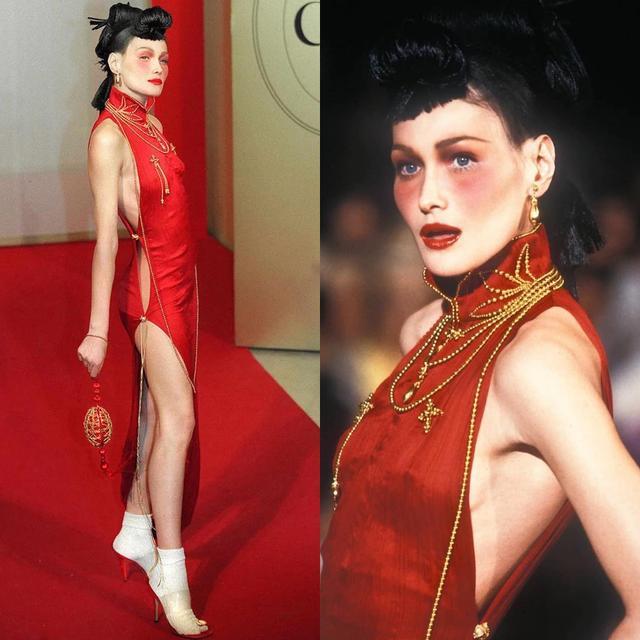
Supermodel Kate Moss is wearing a yellow polka-dot modified cheongsam with grey-blue lace elements on the neckline and skirt; Bruni, the former French president’s wife, wears a small stand-up collar and a matching golden bead chain. Small lanterns took to the T stage, showing just the right hollow sexy. The models came out one by one, with willow-leaf eyebrows, blushes transitioned all the way from the eyes, and the retro hairstyles were full of playfulness, style and arbitrariness.
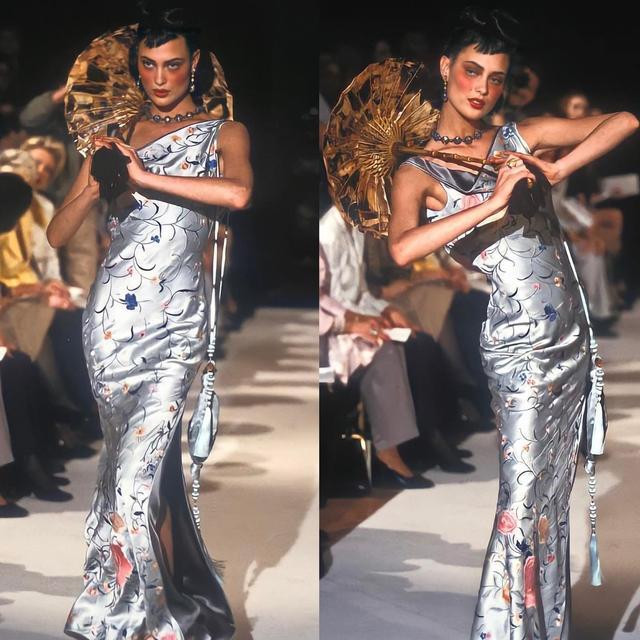
In 1997, this haute couture show has been “appointed god” in the hearts of Chinese style lovers. This is also the place where the public is puzzled by Dior’s plagiarism incident: it is obviously not the first time that Chinese style has been touched, why did it “overturn”?
Some people in the fashion circle have analyzed that the reason why Dior called this skirt a “signature silhouette” of the brand should be that its A-shaped silhouette with a narrow top and a wide bottom is in line with the brand’s first “New Look” in the 1950s. After World War II, Mr. Dior took the lead in emphasizing the feminine curves of waist and wide skirts, which formed a strong contrast with the menswear style during the war and became a classic fashion style.
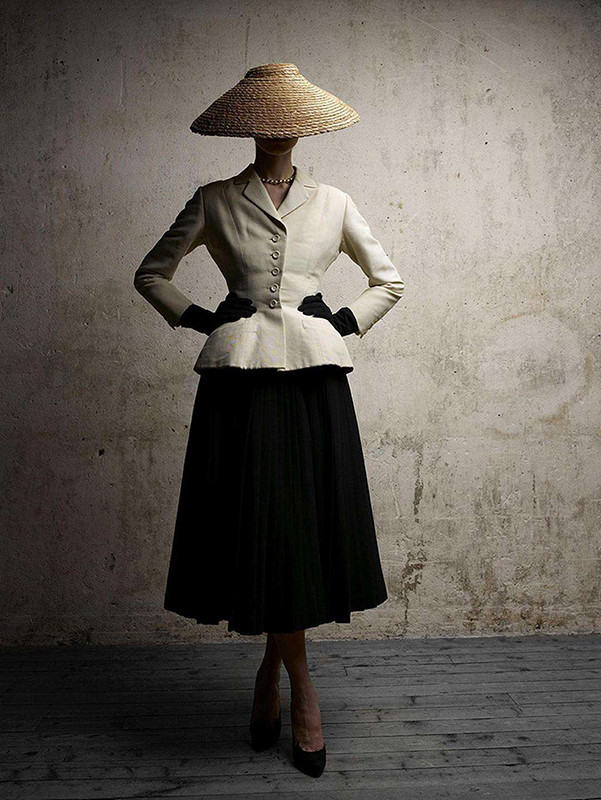
In the opinion of fashion blogger Shiyin, Dior’s dress is indeed consistent with the unique structure and version of the horse-faced skirt. For someone who has proposed “who owns the copyright of Hanfu? No copyright can not prove plagiarism”, she believes, Clothing, as a practical item, is difficult to protect by copyright, which is why there are so many “porters” in the fashion industry. Although Dior does not legally constitute plagiarism, the more serious problem is cultural appropriation. “As a big brand with sound volume, Dior belongs to a relatively strong individual, while Hanfu, as a relatively niche culture, is weak.”
According to HSBC analysts’ calculations, Dior’s sales in 2021 will reach 6.28 billion euros, contributing 10% of the parent company’s LVMH group’s total revenue and 13% of group profits. In front of the undisputed top luxury brands, the tens of billions of Chinese clothing industry is aphasia.
In fact, the Chinese style has always been a classic source of inspiration in the world of high fashion. In the 2019 Elie Saab Paris autumn and winter haute couture show, the designer integrated the large sleeves, plackets, embroidery, etc., which are common in traditional Chinese clothing, into the haute couture dress, and local Chinese designers and brands spared no effort to bring Hanfu elements to the top Show. The “Fashion Oscar” Met Gala held by the Metropolitan Museum of Art, the theme of 2015 is “China: Through the Looking Glass”.

